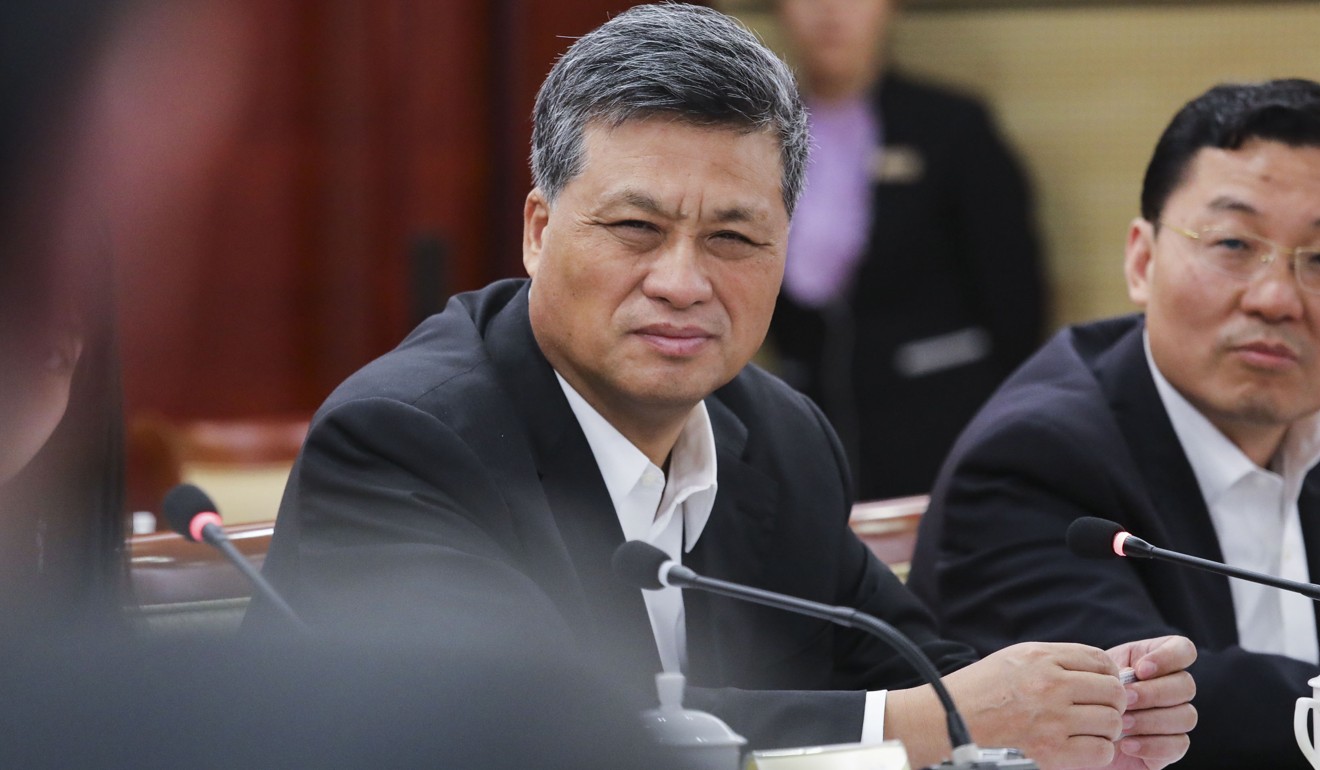
Shenzhen has designs on hosting key Beijing-backed science centre – and Lok Ma Chau Loop on Hong Kong border is part of the plan
- Mainland city is eyeing status as country’s fourth Comprehensive National Science Centre, which could bring a steady stream of funding, research equipment and other support from Beijing
A planned scientific research zone straddling the border between Hong Kong and Shenzhen will be a major boost for the mainland city’s ambitions to become one of only four key science centres nationwide receiving funding from Beijing.
That was the message on Tuesday from Shenzhen’s No 1 official, Wang Weizhong, who said the Shenzhen-Hong Kong Science, Technology and Innovation Collaborative Zone would help the city “overcome our disadvantages in basic scientific research”.
Shenzhen is already widely considered China’s most technologically advanced city, but Wang said he hoped the joint project would help it become a Comprehensive National Science Centre.
The zone is split between the 87-hectare Lok Ma Chau Loop on the Hong Kong side of the border, which hosts the Hong Kong-Shenzhen Innovation and Technology Park, and a 300-hectare Shenzhen Technology and Innovation Park on the other side in Futian district.
“One particularly important point is that we need to make it an international technology and innovation centre for the ‘Greater Bay Area’,” the Shenzhen Communist Party chief said at an annual session of the Guangdong provincial legislature in Guangzhou.

Shenzhen and Hong Kong are part of the Chinese government’s Greater Bay Area plan to turn 11 cities in southern China into an international innovation and technology hub to compete globally.
But winning the status of a Comprehensive National Science Centre would pave the way for central government-funded laboratories, research equipment and other support under a programme rolled out by Beijing in 2016.
Hong Kong university joins forces with top overseas institutions to set up city’s first international research centre on dementia and other neurodegenerative diseases
Wang’s push comes after Guangdong governor Ma Xingrui on Monday released his annual work report highlighting the development of the bay area as the province’s top priority for the coming year. Ma called for greater cross-border collaboration with Hong Kong and Macau in building laboratories and sharing research resources.
The Chinese Ministry of Science and Technology and the National Development and Reform Commission recognise specific districts or groups of laboratories and technology parks as Comprehensive National Science Centres. There are currently three nationwide, and designation as the fourth is being highly sought after by more than a dozen mainland cities.

The existing ones are Zhangjiang district in Shanghai, the city of Hefei in eastern Anhui province, and Huairou district in Beijing.
Wang said the zone straddling the Lok Ma Chau border and a special economic zone at Qianhai, as well as the coming Guangming Science Park and Xili Science and Education City, could be integrated into a national science centre in Shenzhen.
Hainan is the latest Chinese free-trade zone with tech hub ambitions
For years the Lok Ma Chau Loop was a piece of muddy wetland formed as a result of work to strengthen the Shenzhen River in 1997. Hong Kong and Shenzhen settled a long-running ownership dispute in 2017 and agreed that the land would belong to Hong Kong. They also agreed to set up a joint committee to oversee the science zone’s development.

Last year the Hong Kong Science and Technology Parks Corporation was allocated HK$20 billion (US$2.55 billion) by the government to build the Hong Kong side’s first phase.
Wang said on Tuesday he had been personally leading a working group on developing the Shenzhen section.
“We have been working closely with Hong Kong, and communicating on the planning,” he said. “We are now refining the plan, the policies and some operational measures for the park.”
Deng Wenji, a physics professor with Guangzhou’s South China University of Technology, and a Standing Committee member of Guangdong’s top political advisory body, the People’s Political Consultative Conference, said the governments of Hong Kong, Macau and Guangdong could jointly build a technology university in the loop.
“The university could peg itself to top-notch schools around the world, and focus on basic research with the aim of serving the technology industries in the bay area,” Deng said.
Ge Changwei, Guangdong’s top economic planning official, said the bay area project was on track to become a world-class urban centre by 2035.
The head of the province’s Development and Reform Commission said the region would realise the goal in three steps.
“The first phase is up until 2020 for building the infrastructure. The second phase will last until 2022, when Hong Kong, Macau and Guangdong will have completed the harmonising of various rules and regulations,” Ge said. “The third phase will have the whole area developed into a world-class bay area by 2035.”
He added that Guangdong would soon roll out directives from Beijing as well as a three-year action plan.
This year Guangdong will push forward with six objectives, including building cross-border research centres, developing roads and railways, strengthening collaboration in improving residents’ lives, and coordination of the three governments in jointly promoting China’s belt and road overseas trade plan.
“But the priority among priorities is to actively explore ways to align different rules and regulations between Hong Kong, Macau and Guangdong,” Ge said.
Additional reporting by He Huifeng

